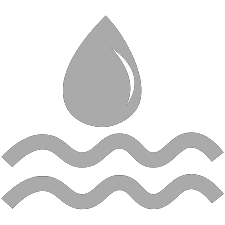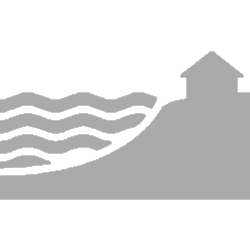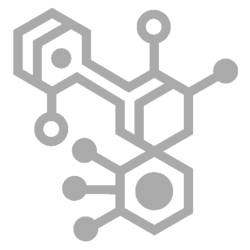The nature of current and forthcoming challenges forces our research, innovation and creative endeavors agenda to be shifted towards a real synergistic and global response. The following target challenges have been identified.

UPRM's 10 Big Challenges

Solutions for WATER reuse and management
As the world population is expected to reach 9.7B by 2050, the increasing demand for quality water, nutritious food, and low-carbon print energy is expected; these three essential constituents have become interdependent. In order to increase food production, greater amounts of quality water will be required, which in turn will make energy input even more demanding that could negatively impact the environment. Therefore, it becomes imperative to develop innovative strategies for sustainable use of water -correlated to energy and food- to guarantee an adequate supply for future generations. The proposed approaches targeted by this UPRM Challenge Area should promote the establishment of novel and transformative strategies to secure good quality water sources. This critical goal will be achieved by the treatment of polluted waters and wastewater sources using energy-efficient cleaning, decontamination and disinfection processes and technologies and, hence, enhancing the efficiency of water usage for human or animal (reusable water) consumption.
UPRM hosts researchers at the Civil Engineering, Materials Engineering, Chemical Engineering and Mechanical Engineering and Applied Chemistry and Biology with proven expertise, on-field and research wise, in the development of new protocols and (nano and macro) platforms to achieve the above mentioned goals. Three main interdisciplinary Research Centers support these endeavors: The NSF Center for Research and Excellence in Science and Technology (CREST): Nanotechnology Center for Biomedical and Energy-Driven Systems and Applications, The Puerto Rico Water Resources and Environmental Research Institute (USGS-PRWRERI), the UPRM Center for Applied Ocean Science & Engineering (CAOSE), the Center for a Sustainable Water, Energy, and Food Nexus (SusWEF). In addition, other initiatives at UPRM (SeaGrant, Instituto Universitario para el Desarrollo de las Comunidades) develop sustainable practices for water usage with local communities.

Novel platforms and devices for HUMAN WELLBEING and ENVIRONMENTAL sustainability
The UPRM community has significant expertise in areas that can possibly impact human wellbeing and environmental sustainability—from experts in psychology and social interactions to engineers producing nanoparticle devices that could improve life conditions for all. Humans do not live in a vacuum; thus, the relationship with the environment is crucial for our survival. To better understand our surroundings, biological, oceanographic and ecosystems studies are warranted if we are to preserve, conserve and sustainably use our resources. Future generations will be confronted with serious environment degradation, catastrophic climate events, and water and food shortages that need to be addressed today: just to mention a few, improving medical protocols and devices, imagining new predictive tools for weather patterns, creating water filtration systems, designing new and improved crops, and exploring ocean resources are some of the challenges that we can investigate now. All of these challenges cannot be solved by a single approach, but through multidisciplinary endeavors that require ingenuity, innovation and collaboration from many perspectives. For example, new medical devices will include engineering design, biological and chemical knowledge, mechanical function and psychological adaptation.
Research centers and laboratories at UPRM are tackling some of these challenges: the Nanotechnology Center for Biomedical, Environmental and Sustainability Applications and the Center for Pharmaceutical Engineering Development and Learning (CPDaL) search for new protocols and devices that can help medical fields. The Caribbean Coastal Ocean Observing System (CARICOOS) specializes in weather forecasting and wave pattern evaluation integrated with the Puerto Rico Seismic Network in order to develop predictive tools for seismic activity, tsunamis and other potential disturbances. The Center for Education and Training in Agriculture and Related Sciences (CETARS) along with several research projects in the Agroenvironmental Sciences work on crop modeling, irrigation and management of soil, organic farming and pest management to improve food safety. The Puerto Rico Water Resources and Environmental Research Institute (PRWRERI) develops monitoring systems for water safety and sustainable usage of water resources. The Interdisciplinary Center for Coastal Studies (CIEL) and the Center for Applied Social Research (CISA) work on mental health, cognition and learning to improve human wellbeing. Ecosystems, academic entrepreneurship, and entrepreneurial education are also part of the platforms in our community, which are promoted through the Business and Economic Development Center.

Renewable ENERGY Sources
The development of renewable energy resources have emerged as an area for innovation across the world. One important aspect of this innovation area is its two-dimensional characteristic. That is, as renewable resources development impact electric systems, it becomes a socio-technical issue, requiring research and innovation both in the technical/physical aspects as well as in its social/economic/political aspects. The University of Puerto Rico at Mayagüez is uniquely positioned at the forefront of both these dimensions in Puerto Rico. Work being undertaken at the School of Engineering by members of the Power Group including Grid Modernization and Capacity Building, Achievability of Renewable Energy Targets, Photovoltaic System Development, etc. is complemented by the Computer Engineering faculty working on the delivery of cloud services for distributed generation in smart grid decision making environments. Also Radar and Climate monitoring research as well as sustainable energy and transactive energy market research is being developed.
Alternatively, in the School of Arts and Sciences, home to the first ever social acceptance to renewable technologies studies in Puerto Rico, resources in the department of economics do research on community renewable energy projects, and the department of Psychology conducts pathbreaking work with consumer behavior patterns within renewable energy systems. Political Science and Sociology faculty have several collaboration efforts dealing with Energy Governance and Energy Transitions research, as well as Energy Security and Justice Studies. Notable efforts include a CRISP OASIS Grant joining the interdisciplinary work of 9 researchers in engineering, climate sciences, computer sciences, community psychology, political science and sociology to model a sustainable energy market for Puerto Rico. The creation of the Puerto Rico Sustainable Energy and MicroGrid Laboratory are just some of the many ways UPRM is leading the way thru innovative interdisciplinary energy initiatives.

Ensure FOOD SECURITY and SAFETY
Food access for humans also known as food security is a global issue that affects all communities. Commonly, due to limited access to clean water, available food may not be safe for human consumption. Therefore, both food security and safety are an important piece to keep worldwide communities healthy. In Puerto Rico, this situation got worse and noticeable after Hurricane Maria raising local concerns for future events. Against the backdrop of limited access to clean water, finite land for agriculture production, global trends in urbanization with arable land being lost to housing, climate change, evolving diets that demand more high-value food products and the looming global crisis in food security projected by 2050, there is a clear need to address food security and safety. All Colleges at the UPRM may interact to exploit current academic programs and conduct research applicable to food security and safety. Centers like The Puerto Rico Water Resources and Environmental Research Institute may conduct research related to water quality to lead fundamental research at the Food Innovation Hub (CITA, CITAI, IIAA). The Caribbean Genome Center may interact with the Tissue Culture Laboratory and the Animal Molecular Biotechnology Laboratory to identify desirable traits in crops and farm animals to improve food production. Others like EEA Dairy Farm which produces primary food products like milk may serve as entrepreneurship incubator in food technology innovation along with the Center for Business and Economic Development.

Sustainable development of COASTAL and OCEAN systems
Despite being an island with approximately 700 miles of coastline (NOAA Office for Coastal Management) that is actively exposed to strong wind, wind-waves, occasional storms, and vulnerable to natural hazards, Puerto Rico does not have any formal ocean and coastal engineering research or education program. The precarious state of our coastal zones is partly due to the fact that a very large percentage of our engineers do not have any knowledge about ocean and coastal processes, and the scarce ocean literacy level of the general Puerto Rican population. Moreover, the observed trends and future projections of sea levels rise, tropical cyclone activity, ocean acidification, pollution, coastal population growth eutrophication, overfishing, and energy extraction/generation continuously threats our ocean and coastal environments. Therefore, it becomes imperative to provide students the fundamental knowledge of the dynamics of the coastal and ocean environments and prepare them with the necessary tools to lessen the impact of coastal hazards and solve problems involving coastal and ocean processes. The disciplines of coastal and ocean engineering are multidisciplinary in nature and combine the classical disciplines of civil, mechanical, and electrical engineering with oceanography, fluid dynamics, and coastal ecology and geology. This multidisciplinary approach integrates science and social needs into a more effective environmental stewardship, hazard mitigation planning, and public policy development (SeaGrant program, CIEL). UPRM hosts researchers in Materials Science and Engineering, Marine Sciences, Biology, Chemistry, Physics and Civil Engineering, with proven expertise, on-field and research wise, to achieve the above mentioned goals. Two main interdisciplinary Research Centers support these endeavors: the UPRM Center for Applied Ocean Science & Engineering (CAOSE) and the Caribbean Regional Association for Coastal Ocean Observing (CARICOOS).

Development of MATERIALS and DEVICES for Challenging Conditions
The viability of today’s and future’s world in terms of security and economy strongly depends on both, the ability to design and process materials from molecular components, and their manipulation for function. The fact that boundaries between materials research and other disciplines are becoming undistinguishable is fostering actual interdisciplinary approaches to face current and foreseen scientific and technological challenges. UPRM vision is well aligned to The National Academies of Science considerations: “Decisions about the development and implementation of new materials will ultimately be based on cost versus benefit for our society” (Challenges for the Chemical Sciences in the 21st Century. Materials Science and Technology. The National Academies of Science, Engineering and Medicine, 2003 Report.). In particular, any attempt to satisfy our technological needs demands the development of devices and systems based on materials with outstanding stability and performance under extreme working conditions as those presented in the space, during and after natural disasters, nanoscale environments, among others. These extreme conditions will demand outstanding and robust performance of materials to tolerate unusually high stresses and strains, high or low temperatures, corrosive or oxidizing atmospheres, strong magnetic and electric fields, and intense photon or radiation flux (adopted from “Basic Research Needs for Materials Under Extreme Conditions. Report of the Basic Energy Sciences Workshop for Materials under Extreme Environments”. Office of Science, US Department of Energy, 2007).
Coupling of the above considerations to the current and foreseen standing of our research portfolio, the UPRM Materials Research endeavors can be encompassed according to: (i) Discovery: new processes, new materials, new properties, new applications; (ii) Synergies: Medicine, Structural Materials, Information Science & Technology, National Security, Environment, Agriculture and Food, Arts; (iii) Challenges &Opportunities: Materials excelling in performance and stability under extreme conditions, and (iv) Infrastructure maintenance and development: State-of-the-art processing and characterization equipment, novel and customized research facilities.
UPRM’s expertise in materials science and engineering is of interdisciplinary nature as represented by: The NSF-CREST Nanotechnology Center for Biomedical, Environmental and Sustainability Applications, NSF- Center for a Sustainable Water, Energy, and Food Nexus, recently funded New PREM, and complemented by related laboratories identified across UPRM.

Establishment of robust and liable CYBERSECURITY and COMMUNICATION systems
After the experience of an extreme weather event such as Hurricane Maria, it became evident that the lack of communication is one of the most disruptive conditions during an emergency. A resilient and robust communication network is necessary in order to coordinate emergency activities, as well as keep informed the public, and establish contact with family and friends after the event, and also to be able to keep the communication flow during the emergency.
It has been reported a tremendous increase in smartphone usage (up to 77% in 2017) to obtain information on severe weather events. This increase is particularly significant for younger generations who do not rely on the traditional broadcast media such as TV and radio. Obviously, this change in the way we obtain and disseminate information tends to rely more and more on the networks that make up the (mobile) Internet. While this form of communication is more flexibility and can be tailored to individual users, it comes with the cost of increased complexity. The objective is to perform research to help in the creation of a resilient telecommunication infrastructure. In order to build a more resilient communication system, we need to establish redundancy. While several ways of communications exists on the Island, such as cell phones, landlines, radio, TV, satellites phones, internet, etc., after the hurricane it was evident that most of them failed. In UPRM we have vast experience in the design and fabrication of antennas as well as weather sensors that are an integral part of a communication network. Also, the Department has a Power System group, dedicated to find solutions to energize a communication network with alternative sources of energy. In addition, the incorporation of drones can also be researched to establish communication links where necessary.

Development of RECOVERY and RESILIENCE Systems
Puerto Rico Reconstruction efforts after the impacts of Hurricanes Irma and Maria have concentrated on the rebuilding of the physical critical infrastructure. The complex interconnections of energy, water, health, transportation, communications, etc. highlight the need for the interdisciplinary convergence of multiple disciplines to solve some of the most intractable problems associated to our vulnerability to climatic events. In this area UPRM brings a unique set of disciplinary skills to the service of Puerto Rico which are unparalleled in the island. Home to the Seismic Network of Puerto Rico, as well as the Sea Grant Program, resources in civil engineering, geology, marine sciences, ocean engineering, as well as anthropological, psychological and disaster sociology resources round up a premier line up of top notch research capabilities distributed through a myriad of centers and institutes. A multitude of these resources are engaged in service from the Puerto Rico Climate Change Council, to a number of special advisory committees at the service of Puerto Rican society.
One valuable lesson we have learned from Maria is that there is a need for innovation in the way universities see themselves as intervenors in emergency management processes and practices. From disjointed, fragmented, competitors in this socially valuable area of research, we should be moving towards more heterarchical, polycentric, collaborative inter-university platforms. Resources at the University of Puerto Rico – Mayagüez have presented two innovations that seek to bridge the gap of organizational innovation towards resilience. Through the creation of the National Institute of Energy and Island Sustainability (INESI), a model of collaborative convergence platform was created to identify, catalogue, interconnect and mobilize communities of practice from the 11 campuses of the UPR around serious energy and sustainability policy issues affecting Puerto Rico. After Maria, and recognizing that no one university can tackle the complexities of disaster management and resilience building by itself, INESI has scaled up their efforts to interconnect their platform to other university platforms to create a Inter University Collaborative Convergence Platform that can not only deliver knowledge and capacity building prowess to Puerto Rico, but also to every member of the platform, creating a collaboration based of constant mutuality rather than one shot humanitarian aid.

Building INNOVATION and ENTREPRENEURSHIP Ecosystems
Economic development requires a healthy development of innovation and entrepreneurship. While innovation and entrepreneurship by itself are positive intellectual and economic activities, they are not enough to create sustainable development. Robust Innovation and Entrepreneurship (I&E) Ecosystem, such as Silicon Valley, help sustain economic development. I&E ecosystems are a set of interdependent actors, institutions, policies and services that stimulate innovation and entrepreneurship. Universities are an important component of the ecosystem as one of the main creators of innovative knowledge, ideas, products and services. Goal of the INNOVATION and ENTREPRENEURSHIP ecosystem challenge area is to promote the establishment of robust innovation and entrepreneurship ecosystems not only at institutional levels but also in a local, regional, and national level.
UPRM’s expertise in innovation and entrepreneurship ecosystems is interdisciplinary. We go beyond research and courses, we have an internal I&E ecosystem, UPRM E-Ship Network, which includes professors, students, and Centers in all UPRM’s colleges (Agricultural Sciences, Arts & Sciences, Business Administration, and Engineering). While the Business and Economic Development Center, the Business Research Center, and the faculty of the College of Business Administration produces most of the research, courses, and services on I&E ecosystems, it is increasingly growing among other professors and Centers mainly in Engineering followed by Agricultural Sciences and Arts & Sciences. Examples of other Centers with I&E components are the NSF Center for Research and Excellence in Science and Technology (CREST): Nanotechnology Center for Biomedical and Energy-Driven Systems and Applications, The Puerto Rico Water Resources and Environmental Research Institute (USGS-PRWRERI), and Center for Food Technology and Research (CITA-UPRM).

Restructuring EDUCATION to incorporate 21ST CENTURY SKILLS
Creating intentional, coherent, engaging, and integrated educational experiences, developing 21st century skills including collaboration, leadership, and professional ethics are emerging—and necessary—themes to revolutionize our institutions. The following summarizes what the American Association for Colleges and Universities (AACU) sees as needed developments for 21st century education and where UPRM should direct its research education efforts: (1) integrate knowledge and develop higher-order learning skills and abilities rather than a set of unrelated or loosely connected courses; (2) connect with the student’s learning goals in general as well as his or her major area of study and prepare the student to integrate new knowledge throughout his or her lifetime; (3) provide a strong foundation for equity to be civically engaged both as a student and as a graduate; and (4) provide professional development pertinent to the current and future workforce.
The UPRM Resource Center for Education Research and Service (Spanish acronym CRUISE) conducted a Teacher Preparation Program Impact Research that CAEP reviewers recommended publishing as a model for other institutions. CRUISE has conducted classroom level Education Action-Research both in the university and area schools as well as provide teacher professional development in Project Based Learning, Learning Communities, Standards in Practice, Universal Design for Learning, and Using Technology in the Classroom. The UPRM Resource Center for Distance Education (Spanish acronym CREAD) provides assistance to university professors developing Online Teaching Materials, creating and delivering effective distance learning courses as well as conducting and disseminating research on effective distance teaching and video learning techniques and strategies. The UPRM E-ship Network has effectively stimulated and supported cross-disciplinary student teams from Business Administration, Engineering, and Agriculture programs that embody the principles of 21st century skills. Finally, all UPRM programs are expected to reduce program total credit hours by 15% over the next two years, a scenario common in other academic institutions. The UPRM Center for Professional Development, the CRUISE, the CREAD, the E-ship Network and allied professors are well qualified to integrate current education research that will respond to the impending revolution described by the AACU.

